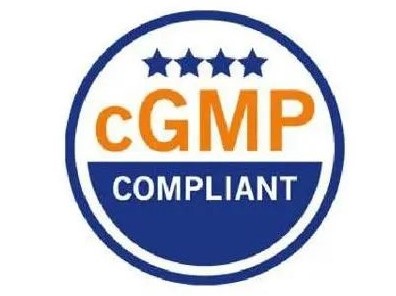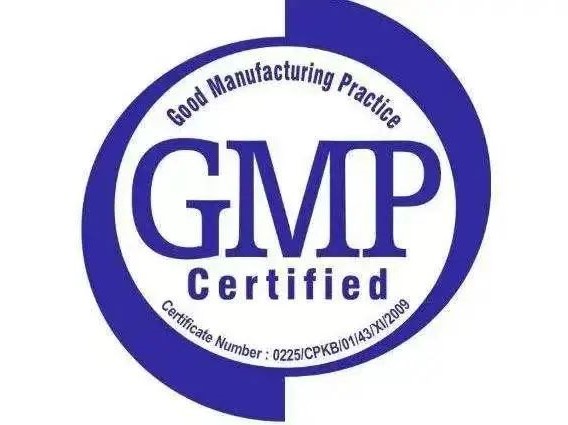


What is cGMP?
The world's earliest drug GMP was born in the United States in 1963. After several revisions and continuous enrichment and improvement by the US FDA, cGMP (Current Good Manufacturing Practices) in the United States has become one of the representatives of advanced technology in the GMP field, playing an increasingly important role in the safe and effective use of drugs worldwide. China first promulgated the statutory drug GMP in 1988, and has mainly undergone three revisions since 1992, 1998, and 2010, which still need further improvement. During the more than 20 years of promoting drug GMP work in China, from introducing the concept of GMP to promoting GMP certification, phased achievements have been achieved. However, due to the late start of GMP in China, there have been many phenomena of mechanically applying GMP, and the meaning of GMP has not been truly integrated into the actual production and quality management.
Development of cGMP
The current GMP requirements in China are still in the "initial stage" and are only formal requirements. In order for Chinese enterprises to enter the international market with their products, they must align their production management with international standards in order to gain market recognition. Although the Chinese government has not yet mandated pharmaceutical companies to implement cGMP, this does not mean that there is no urgency for China to implement cGMP. On the contrary, managing the entire production process according to cGMP standards is an essential prerequisite for moving towards internationalization. Fortunately, currently in China, pharmaceutical companies with forward-looking development strategies have realized the long-term significance of this regulation and put it into practice.
History of cGMP Development: The internationally accepted cGMP, whether in the United States or Europe, currently the cGMP compliance inspection at production sites follows the unified cGMP specifications for raw materials formulated by the International Conference on Harmonization (ICH), also known as ICH Q7A. This specification originated from the International Conference on Harmonization of Raw Materials (ICH for API) in Geneva, Switzerland in September 1997. In March 1998, led by the US FDA, a unified "cGMP for raw materials", ICH Q7A, was drafted. In the autumn of 1999, the European Union and the United States reached a cGMP mutual recognition agreement for raw materials. After the agreement came into effect, both parties agreed to recognize each other's cGMP certification results in the trade process of raw materials. For API companies, cGMP regulations are actually the specific content of ICH Q7A.
The difference between cGMP and GMP
CGMP is a GMP standard implemented by countries such as the United States, Europe, and Japan, also known as the "international GMP standard". cGMP standards are not equivalent to the GMP standards implemented in China.
The implementation of GMP regulations in China is a set of GMP regulations applicable to developing countries formulated by the WHO, with a particular emphasis on the requirements for production hardware such as production equipment.
The cGMP implemented in countries such as the United States, Europe, and Japan focuses on the production of software, such as regulating the actions of operators and how to handle unexpected events in the production process.
(1) Comparison of certification specification catalogs. For the three elements in the drug production process - hardware systems, software systems, and personnel - cGMP in the United States is simpler and has fewer chapters than GMP in China. However, there are significant differences in the inherent requirements for these three elements. China's GMP has more requirements for hardware, while the United States' cGMP has more requirements for software and personnel. This is because the production quality of drugs fundamentally depends on the operator's operation, so the role of personnel in GMP management in the United States is more important than that of factory equipment.
(2) Comparison of job qualifications. In China's GMP, there are detailed regulations on the qualifications (educational level) of personnel, but there are few constraints on the responsibilities of personnel; In the cGMP system in the United States, the qualifications (level of training) of personnel are concise and clear, while the responsibilities of personnel are strictly detailed. This responsibility system largely ensures the production quality of drugs.
(3) Comparison of sample collection and inspection. China's GMP only stipulates necessary inspection procedures, while the cGMP in the United States specifies all inspection steps and methods in great detail, minimizing confusion and contamination of drugs at various stages, especially in the raw material stage, and providing assurance for improving drug quality from the source.
Difficulties in implementing cGMP
The GMP transformation of Chinese pharmaceutical enterprises has been relatively smooth. However, there are still challenges in implementing cGMP, mainly reflected in the authenticity of details and processes.
For example, a pharmaceutical company in Europe wants to enter the US market with a promising raw material drug and submits a certified product to the US FDA. Previously, during the raw material synthesis process, there was an accuracy deviation in one of the two temperature gauges of the reaction tank. Although the operator had processed and requested instructions, they did not record it in detail on the production batch records. After the product was produced, quality inspectors only checked for known impurities during chromatographic analysis, and no problems were found. Therefore, a qualified inspection report was issued. During the inspection, FDA officials found that the accuracy of the thermometer did not meet the requirements, but no corresponding records were found in the production batch records. During the verification of the quality inspection report, it was found that chromatographic analysis was not carried out according to the required time. All these violations of cGMP cannot escape the scrutiny of the censors, and this drug ultimately failed to enter the US market.
The FDA has determined that its failure to comply with cGMP regulations would harm the health of American consumers. If there is a deviation in accuracy according to cGMP requirements, further investigation should be arranged, including checking the possible results of temperature deviation from accuracy, and recording the deviation from the process description. All inspections of drugs are only for known impurities and known adverse substances, and for unknown harmful or unrelated components, they cannot be comprehensively detected through existing methods.
When evaluating the quality of a drug, we often use the quality inspection criteria to determine whether the drug is qualified or based on the effectiveness and appearance of the product. However, in cGMP, the concept of quality is a behavioral norm that runs throughout the entire production process. A fully qualified drug may not necessarily meet the requirements of cGMP, as there is a possibility of deviation in its process. If there are not strict regulatory requirements for the entire process, potential hazards cannot be detected by quality reports. This is why cGMP execution is not as simple as that.
Post time: Jul-26-2023

